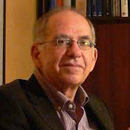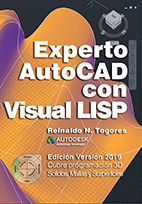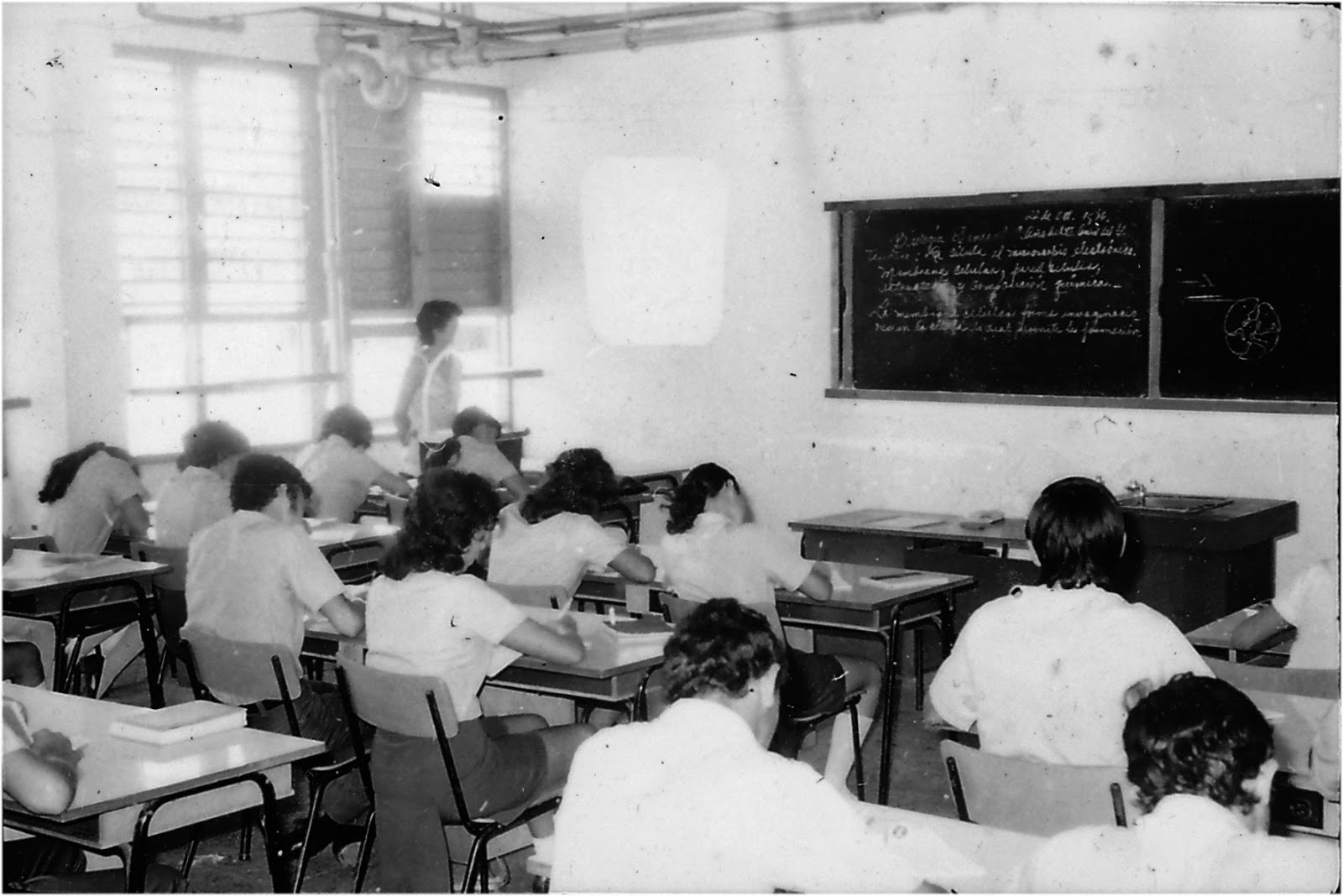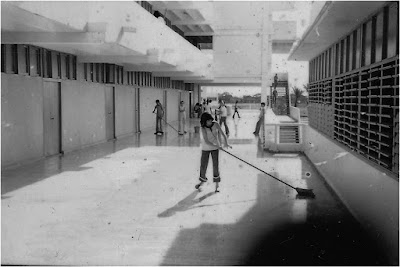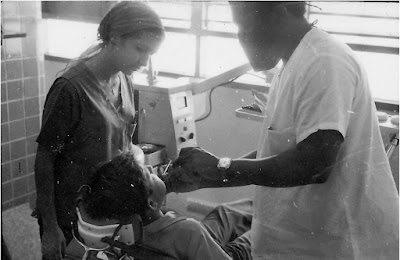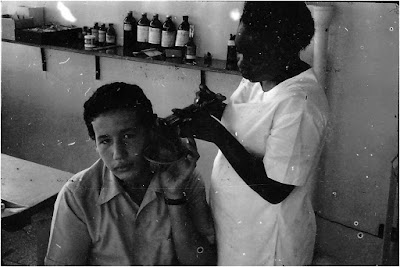| Photos: R. Togores' Archive. | Versión Española. |
"When I want to rest and think I sit in the park bordering the mass meeting square. Here I find myself protected. It is likely that the park has been designed with this idea in mind, what I like is the way the park's shape simultaneously allows the mass gathering of students and that they may as well enjoy solitude. The park is very cozy."
Roberto Segre "La Escuela en Forma",
Cuba Internacional Magazine. Havana, august 1976. Year VIII No. 84
Testimonials.
Araceli De Varona, student: I am a former student of the Camagüey Vocational School, from its first graduation -1978- and took part in the construction of the school. I still remember when you and Arch. Carlos Quintanilla went to the controls. He showed me the plans and I was delighted. After graduating I studied Architecture. As an Architect, I took part in the remodeling of the Topes de Collantes Sanatorium and the development of the Trinidad Tourist Hub. In my years at the Vocational I met the late Arch. Roberto Segre with whom I had a friendship for many years. He was kind enough to quote me in one of his writings, where I explained my feelings in the Student Meetings Plaza. Thank you very much to you on behalf of my classmates, because we lived part of our youth, desires, longings in an architectural work that served as the backdrop to help us dream. We still remember it so fondly... Elvira Siso, the School's first principal:Source: Periódico Adelante, 30 Agosto 2016.  At that time, the school attended the clinic -although methodologically it depended on Public Health-, the transport base, the warehouses that were overwhelmed so we had to occupy classrooms to keep all those things: hairdressing materials, scissors, brushes, combs, dyes and dandruff lotion. Elvira was in charge of the school for four courses and does not forget the content of the inaugural speech in which a call was made to study, to take care of the campus and how the students should behave, many of them now turned into excellent professionals, even -she explained- those who have emigrated meet regularly in what they call: the vocational student. When the time to go home for the weekend arrived I told them sometimes, seeing them so reluctant to take the buses: hurry up gentlemen! And they answered: the truth is that we go because we have to. So good they felt. Normando Suárez Fonte, Physical Education Teacher:Source: Periódico Adelante, 26 Agosto 2016.  This has been my only workplace since I graduated. I started teaching practice in 1984, and I stayed. I don't know how many students have passed through my hands. I recently studied for a degree in physical rehabilitation having as a teacher one of my students, Dr. Julio Cesar Rodriguez. Many are the names, but I remember among my first pupils the Camagüey Television journalist, Orestes G. Casanova. He speaks with understandable sadness of the lack of sports equipment, the loss of the pool, the running track, the indoor basketball courts and the poor condition of all the other sports areas.   Intramural competitions took place on the track, among groups from the school, the winners being selected to compete in the National Inter-IPVCE Games. Several times we won. In the "Vocational" we practiced all, basketball, football, baseball, volleyball, chess, athletics ... There was an aerobic team. That was as motivating as the mathematics, physics or biology contests. |
